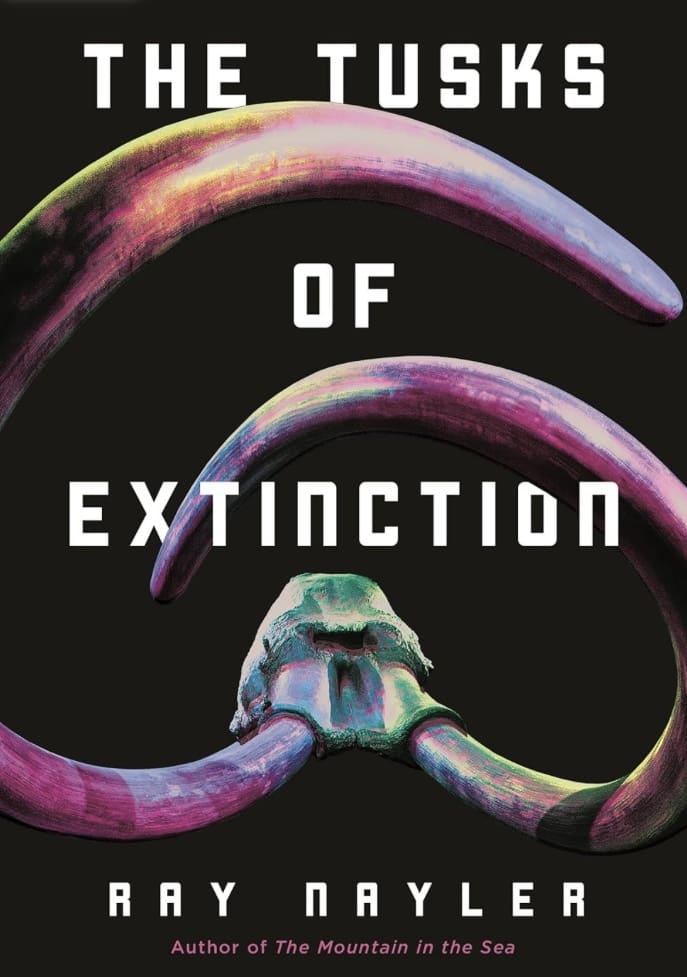
Synopsis
When you bring back a long-extinct species, there’s more to success than the DNA.
Moscow has resurrected the mammoth, but someone must teach them how to be mammoths, or they are doomed to die out, again.
The late Dr. Damira Khismatullina, the world’s foremost expert in elephant behavior, is called in to help. While she was murdered a year ago, her digitized consciousness is uploaded into the brain of a mammoth.
Can she help the magnificent creatures fend off poachers long enough for their species to take hold?
And will she ever discover the real reason they were brought back?
Review
The Tusks Of Extinction is a mammoth of speculative fiction, in every sense of the word. It plays with perspective to fantastic effect, providing an insightful, engaging, and entertaining conjecture on conservation.
Ray Nayler’s debut, The Mountain In The Sea, made us look at an octopus with fresh eyes. His latest novella expands on all the things you loved about The Mountain In The Sea, and then some. It’s a perfect companion to it in many respects. Only, this time, it’s mammoths under the microscope.
The challenges of de-extinction make a fascinating backdrop on which to paint a complex study of what makes us human. There’s a nature to humanity, and it’s explored beautifully through the varying lenses of its three main characters.
If you’re wondering whether three different perspectives can be fully explored in the short length of a novella, then don’t worry — there’s substance packed into every sentence. Each character is given depth and realism, and the switch between them allows for some beautiful moments of juxtaposition and harmony. There’s a real beauty to the way they all come together, making the book feel more complete somehow.
Damira was the absolute standout for me. She’s a scientist (specialising in the study of elephants) whose consciousness has been uploaded into the body of a mammoth. The way her viewpoint changes from body to body, and how her new form impacts her is exquisitely rendered. I could feel her trunk, the thickness of her hide, and the sharp edge of her tusk, which is exactly the point. Every herd needs a leader, and Damira makes a superb one, not just for the mammoths, but for the reader too.
The prose is lush. The world is packed with futuristic details that make it feel both grounded and fun. There’s a real refinement to the way that Nayler hints at the wider world. A single word can change the whole landscape. Nothing is spoon-fed. His style has never been more impactful than it is here.
Ultimately, this is not just a cool take on the conservation challenges of the future, but a reminder that empathy holds true power, while also probing at its limits. When a species becomes aware of the challenges it faces to survive, it becomes accountable for the way it approaches those challenges. This novella didn’t just enhance my empathy for the elephants of the world, but it made me ponder the way in which humanity goes about the business of preservation. Life isn’t just about survival, it’s about the way we survive, and whether we can preserve our empathy as a species, or whether our ability for gentleness and compassion is heading for extinction. And in this respect, it performs an act of de-extinction — resurrecting the question of what makes us human by forcing us to consider how we treat the inhuman. It doesn’t feel preachy, but it definitely throws up more questions than you’d expect for a book of its size.
It may be short in length, but this novella is elephantine in its scope and depth. If you’re a fan of The Mountain In The Sea, you’ll enjoy the shape of these tusks. Both cerebral and heartfelt, The Tusks Of Extinction aims for both the head and heart, and it doesn’t miss. It’s a must-read for every fan of genre-bending, thought-provoking sci-fi. This is a triumph of a story that, much like an elephant, you’ll never forget.







Leave a Reply